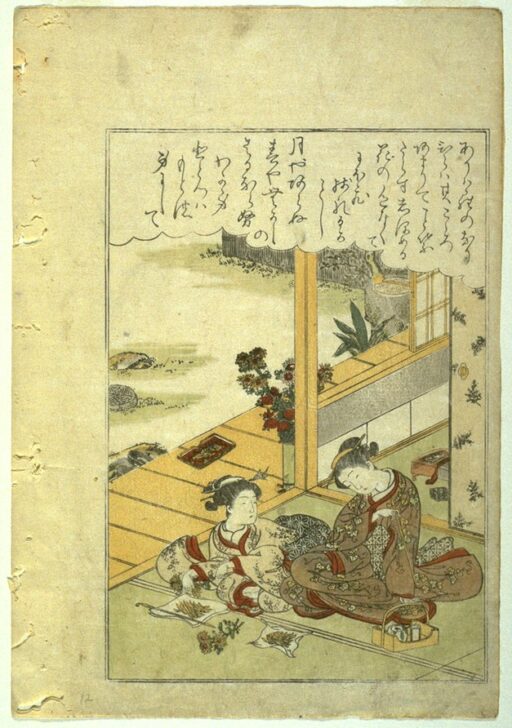Two Women Playing with Chrysanthemums: a page from a book of poetry
Shunshō Katsukawa

Description
This delightful print is a page from a book of classical Japanese poetry, produced in Edo. Addressed to a female audience, the book is but one example of how Edo publishers in the latter eighteenth century embraced new media and subject matter, to appeal to a growing population of educated women in the city. Katsukawa Shunshô is best known for his powerful portraits of actors on stage, but here he borrows from Harunobu’s idiom to create a charming domestic interior. Everything about these two young women identifies them as daughters of the wealthy merchant class: they are skilled at flower arranging and music (note the end of the koto zither, barely visible in the far room), they are beautifully dressed but modest in demeanor, and they enjoy a good smoke from time to time.
The elegantly brushed poem in the clouds over their heads is by a famous ninth century poet, Ariwara no Narihira (823–880). First recorded in the Kokinshû imperial collection of 905, it can be rendered in English as:
Can it be that the moon has changed?
Can it be that the spring
is not the spring of old?
Is it my body alone
that is just the same?
(as translated by Craig Bownas)
M. Graybill
"Courtesans, Cross-Dressers, and the Girl Next Door Images of the Feminine in Japanese Popular Prints"
3/9 - 9/1/02
Usage Rights:
If you are interested in using an image for a publication, please visit https://umma.umich.edu/request-image/ for more information and to fill out the online Image Rights and Reproductions Request Form.